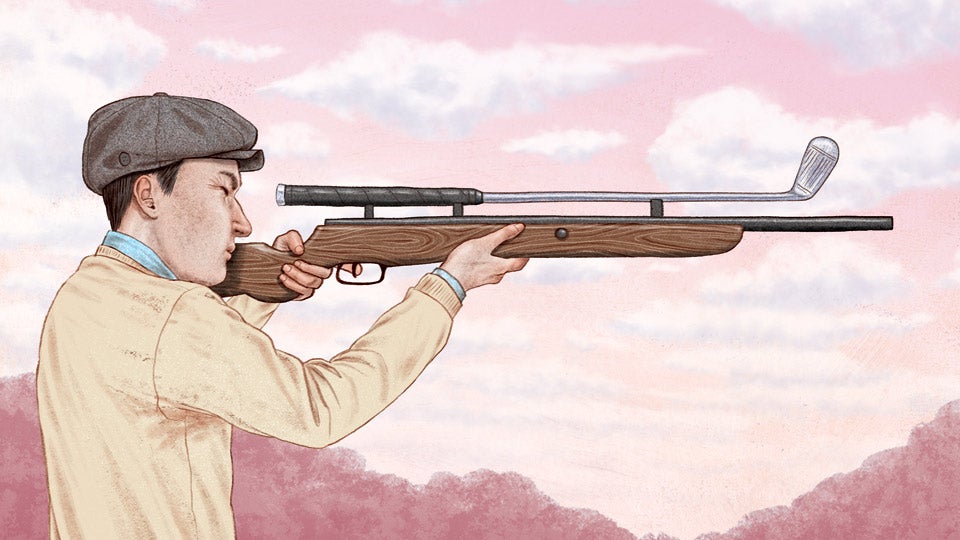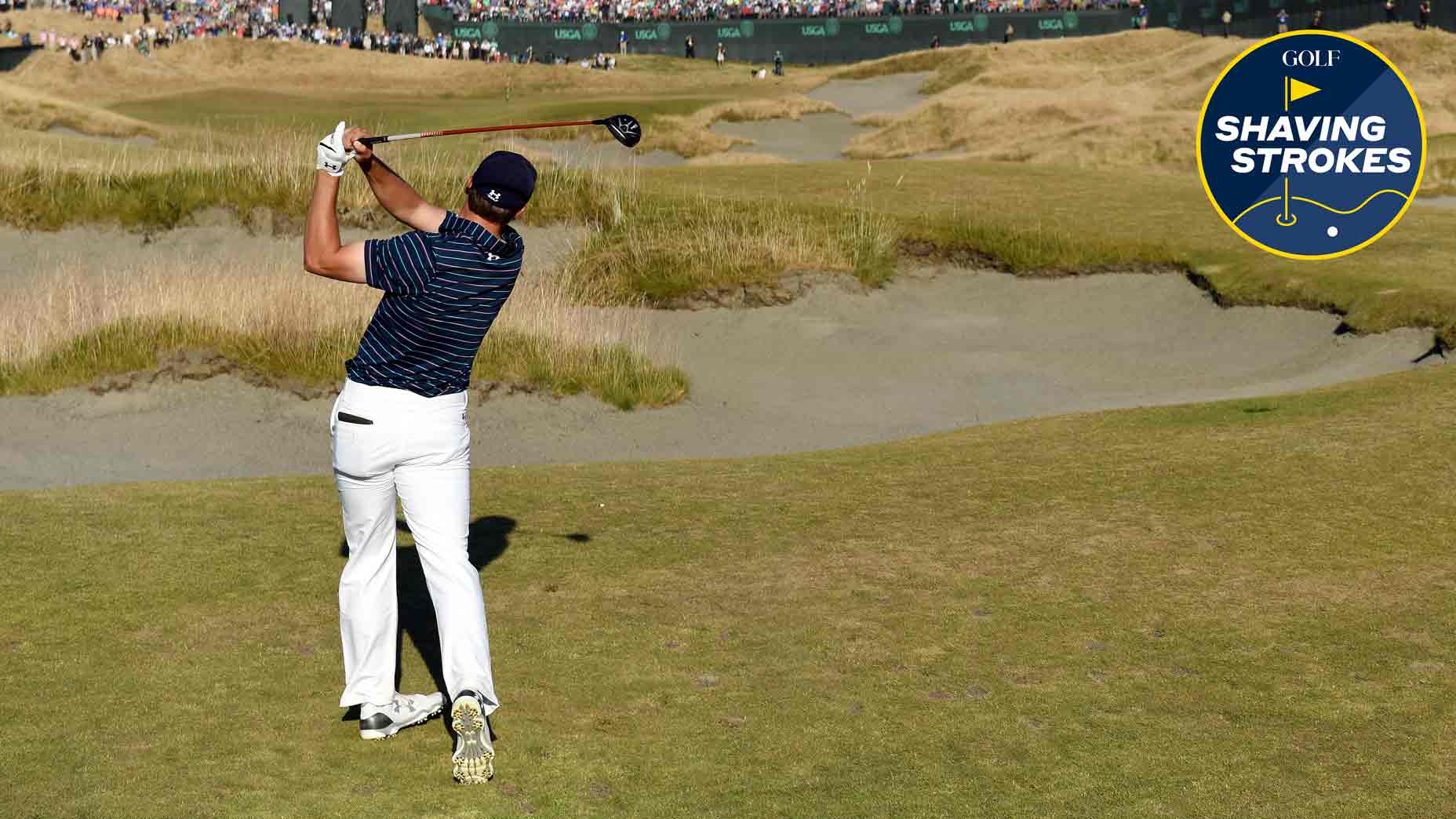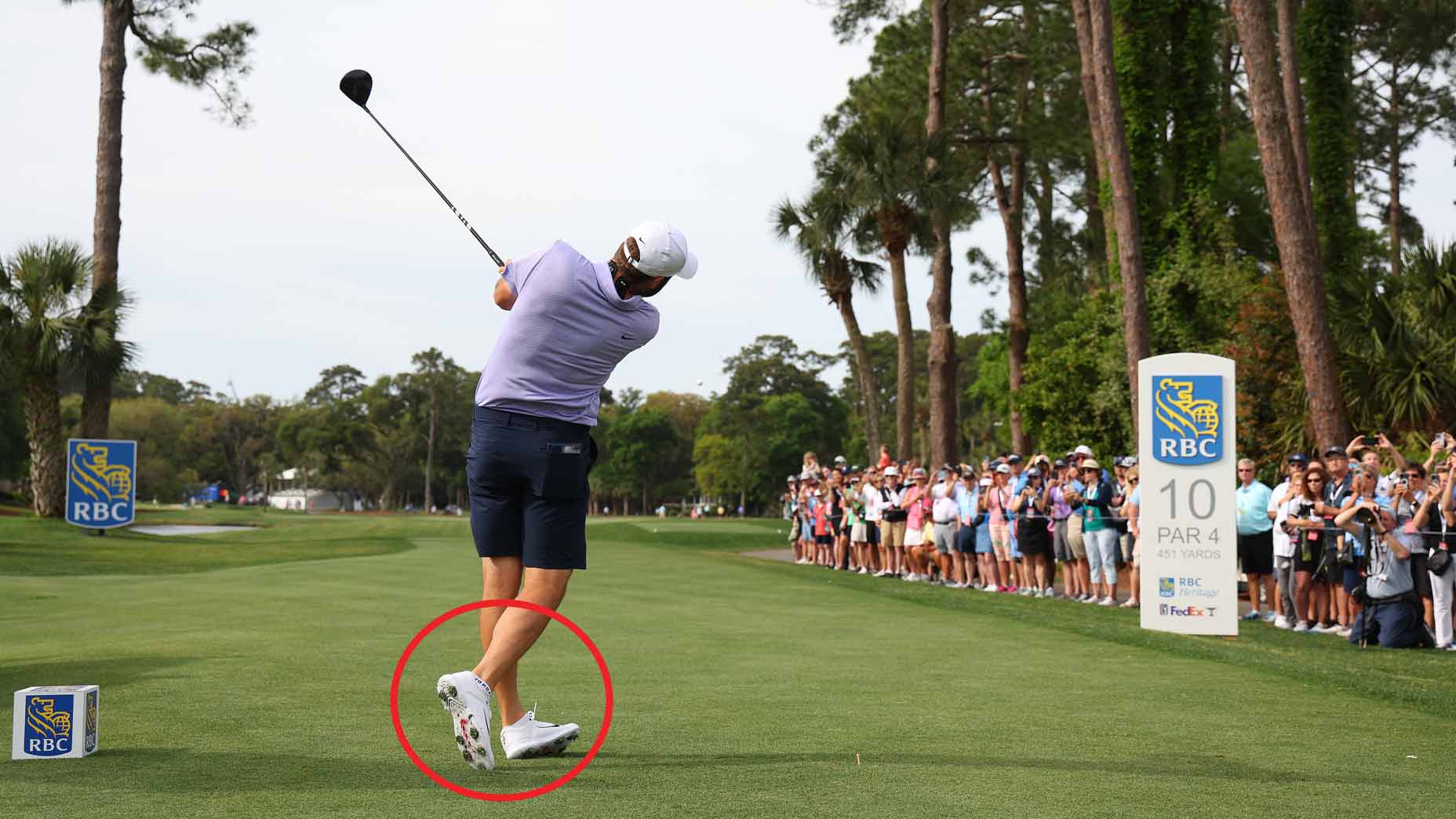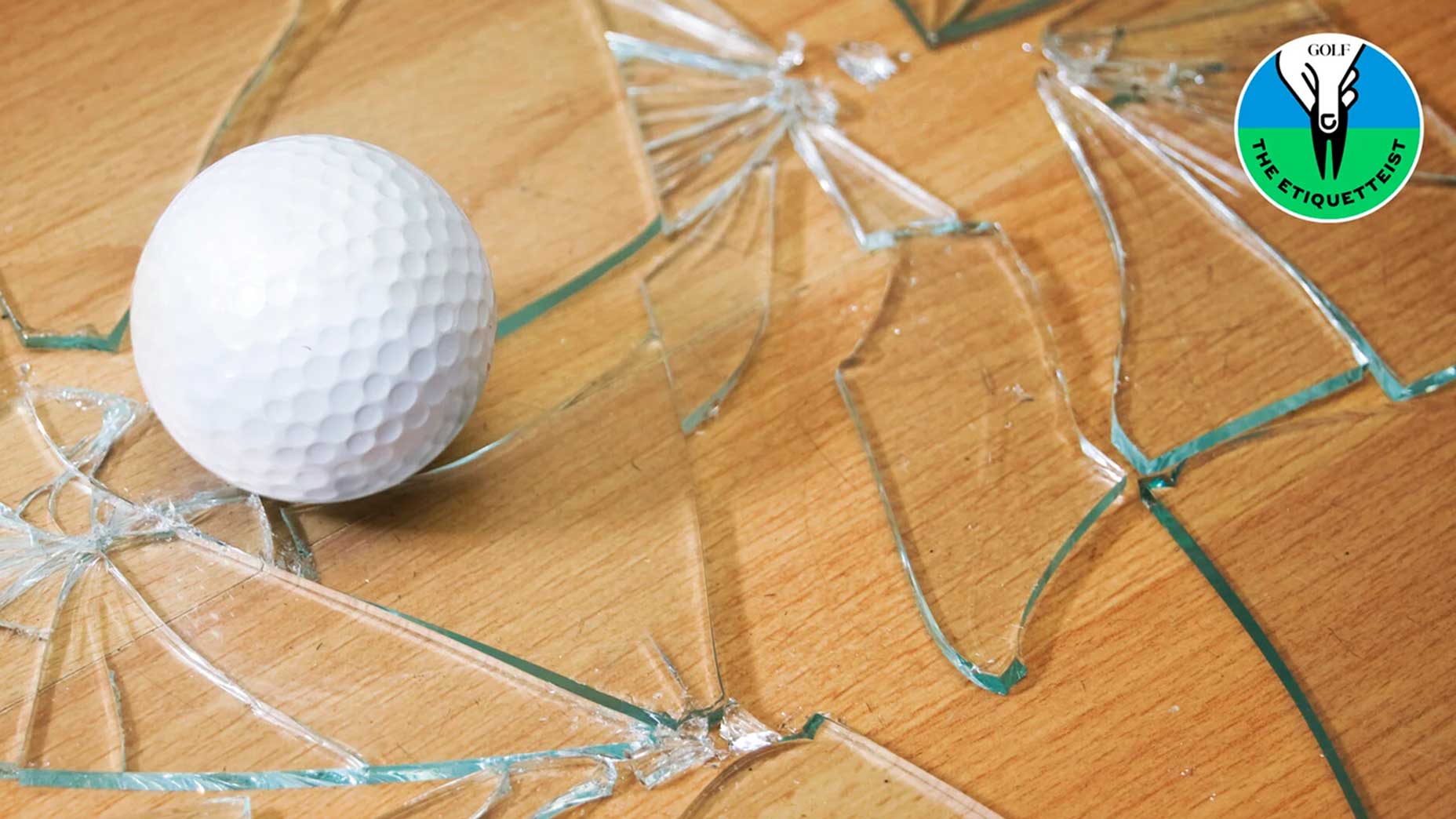Hey Rules Guy: During a match, my directionally challenged opponent used a club to help him take better aim. He’d place a club on the ground to help get the correct alignment, then toss it aside before hitting his shot. Isn’t this an illegal aid?
– Lou Maiatico, via e-mail
I feel for the guy, Lou— it’s easy to misaim in this game. (If only clubs came with those handy-dandy hunting-rifle scopes!) In fact, using a club as a temporary directional aid isn’t against the Rules. Under Decision 8-2a/1, your opponent’s use of the club is permissible, since he removed it before making his stroke. Now, had he forgotten to remove the club, he would have been penalized two strokes in stroke play or with the loss of the hole in match play. Although the relevant rule is different, that same penalty would apply to a Tour pro whose caddie, having (legally, under Rule 14-2b) helped the boss align, forgets to move himself from an extension of the line of play or putt behind the ball before the player makes the stroke. Remember: Ready, aim, remove…fire!

Dear Rules Guy: My ball came to rest a foot from a hazard but in front of a large branch. Half of the branch was in the hazard, while the other half was outside it. My swing was obstructed by the piece outside the hazard. May I move the branch even though part of it lies in the hazard?
– Bob Dewitt, St. Petersburg, Fla.
While I cannot condone branching out from the Rules, yes, you may move the detached branch. Per Rule 23-1, because your ball lies “through the green”—defined as all of the course except (a) the teeing ground and putting green of your current hole and (b) all hazards on the course—you may remove the loose impediment. You’re also free to move a loose impediment that sits entirely outside a hazard when your ball is playable inside a hazard. Only when both the ball and a loose impediment (whole or part) are inside or touching the same hazard is such housekeeping, well, hazardous. In that event, illegal removal would cost you two strokes in stroke play or loss of the hole in match play.
Rules Man: My match-play opponent drove it O.B. onto a road. As his cart neared that general area, a passing car ran over the ball and knocked it back inbounds. I argued that he should return to the tee and take a one-stroke penalty, but he played it as it lay, no penalty. Who was right?
– Buzz Adamski, St. Maarten
I recall the question that haunted Nixon: “What did he know, and when did he know it?” Your opponent knew his ball had come to rest O.B., so he was required to proceed under penalty of stroke and distance. Had he been unaware that his ball had gotten vehicular help, he’d have been all clear. Now, sometimes there’s uncertainty. Let’s say a bystander said he thought he saw a car knock the at-rest ball into play, but neither you nor your opponent knew for sure. Per Decision 18-¼, if you can both agree on a course of action, you’re good to go. If you can’t, he should do what he thinks is fair and honorable. Should you disagree and wish to protest, you must tell him you’re making a claim to the competition committee before either of you play from the next tee.







